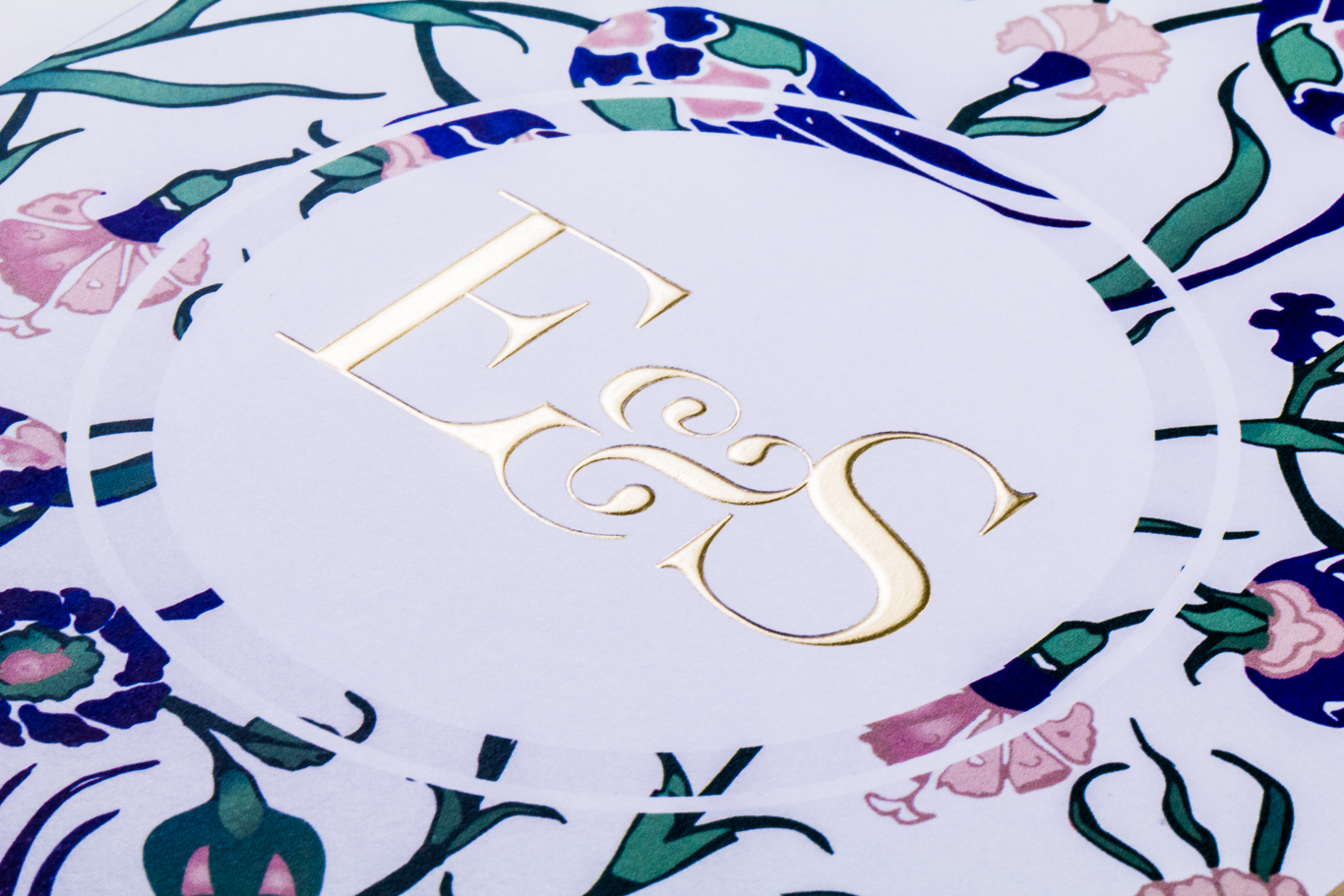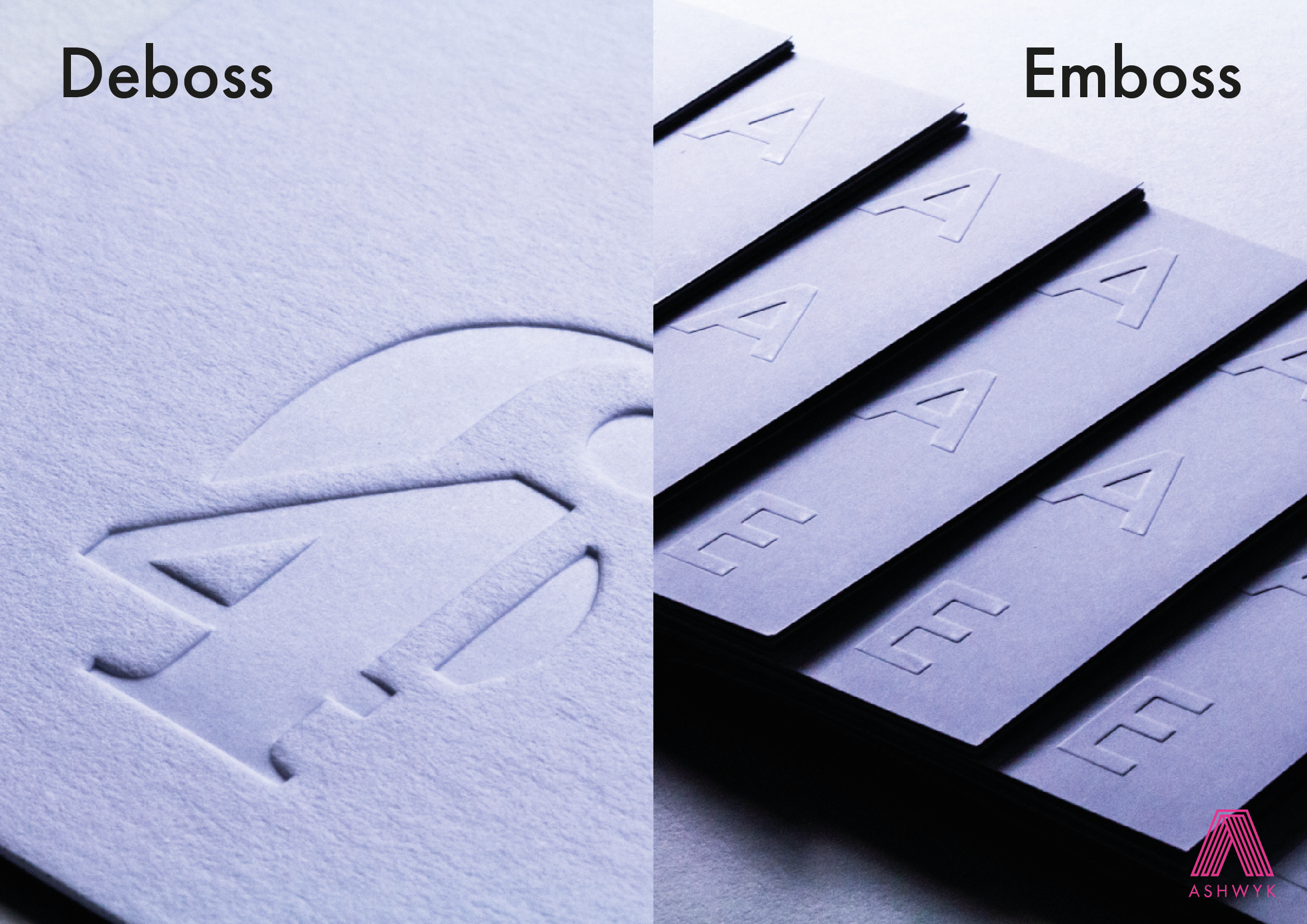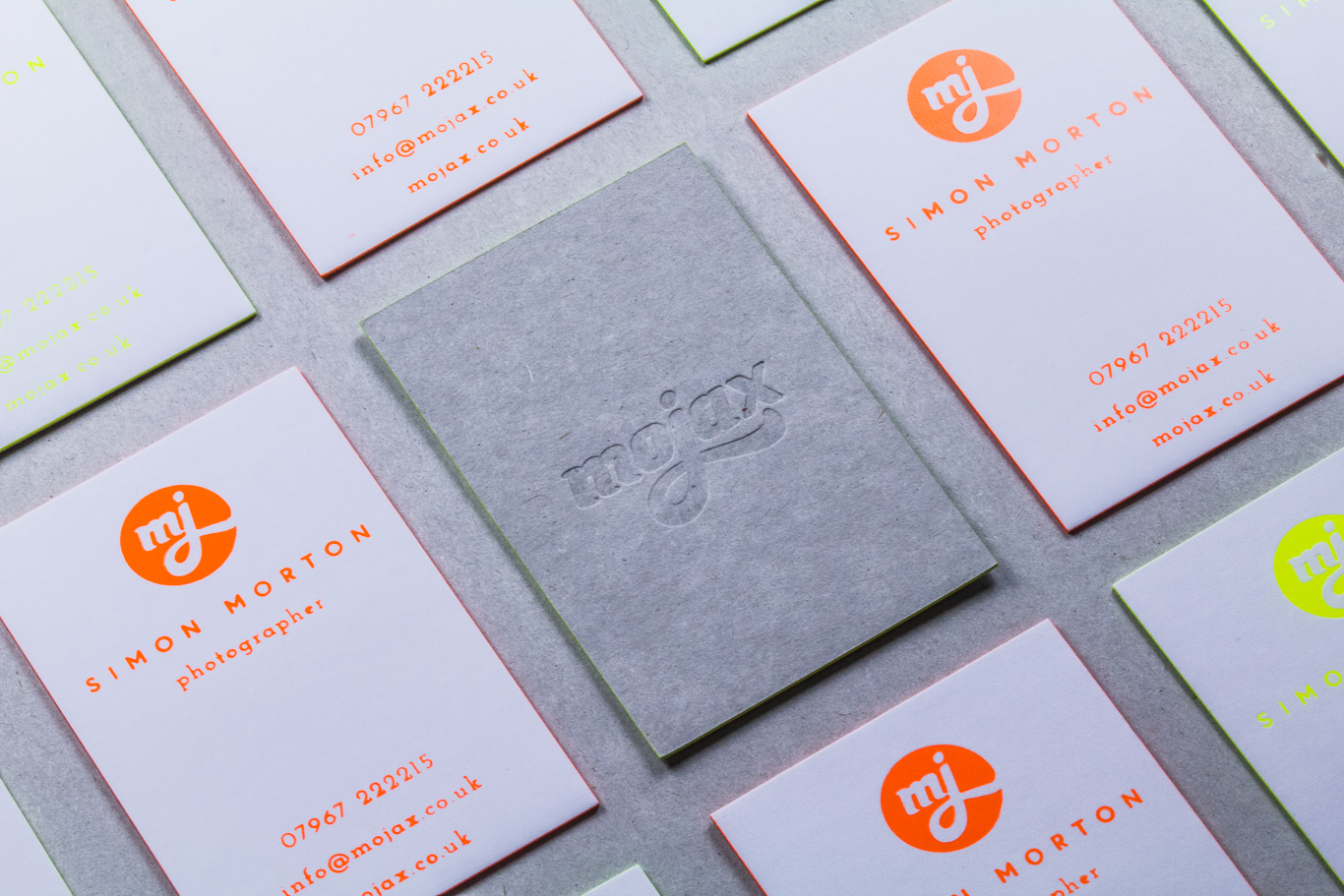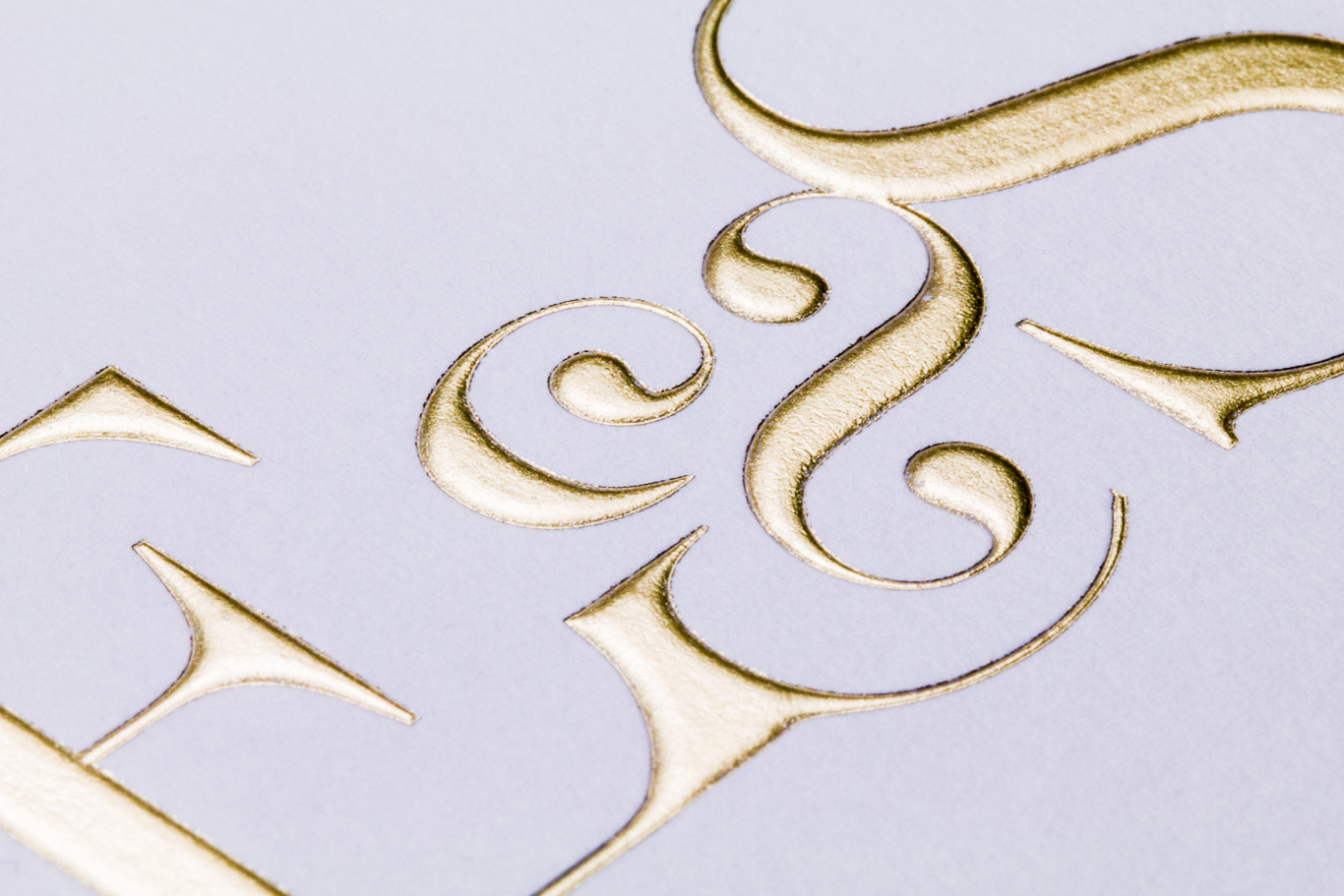
Order your free emboss and deboss samples here.
Whilst most of us have heard of embossing and debossing, the two processes are often confused. Don’t worry if you’re still not quite sure of the difference – most people aren’t! Fortunately, we’ve put together a quick guide to embossing and debossing which will help make up your mind about which technique you would like to use for any upcoming print jobs.
Embossed paper is convex and feels raised, whilst debossed paper is concave and feels engraved. To use a simple analogy, embossed pieces are like outie belly buttons, whilst debossed pieces are like innies.
Paper can be embossed using two dies. These specialised shaping tools include a main die and a counter die that effectively act as a mould for your image. Once the paper has been embossed, the image appears on both sides of the sheet.

Debossing is different in that it only needs one die to depress the paper. Whilst the debossed image is not usually very visible on the other side of the paper, it is still sometimes detectable. Ultimately, the appearance of your debossed or embossed image depends on the type of paper you use and how much pressure has been applied during the process. Fortunately, we possess the expertise and craftsmanship to help you achieve the perfect look.
Yes. All it takes is a little extra know-how. To achieve this chic and traditional effect, you will need to use what is known as a duplex mount. This allows you to emboss one sheet whilst mounting another behind it, literally papering over the embossed effect on the back. Duplex mounting can also be used during the debossing process to avoid any possible imprints showing up on the reverse of your sheets.

If the embossing or debossing process is described as ‘blind’, it is carried out without the use of ink or foil. Personally, I think embossed paper looks best with a foil, whilst debossed paper looks best blind. This is because blind debossing flattens out paper fibres, leaving an elegant double tone on the sheet. Blind debossing also creates more shadows compared to blind embossing.
Foil embossing, however, as can be seen below, is very striking and will make for an eye-catching effect. The foiling and embossing processes are carried out at the same time to create a perfect finish.

Feel free to drop us a line (details below) if you would like to know more about our embossing and debossing services or would like assistance on your next project.
email: info@ashwyk.com
phone: 01375 846669
Order your free emboss and deboss samples here.